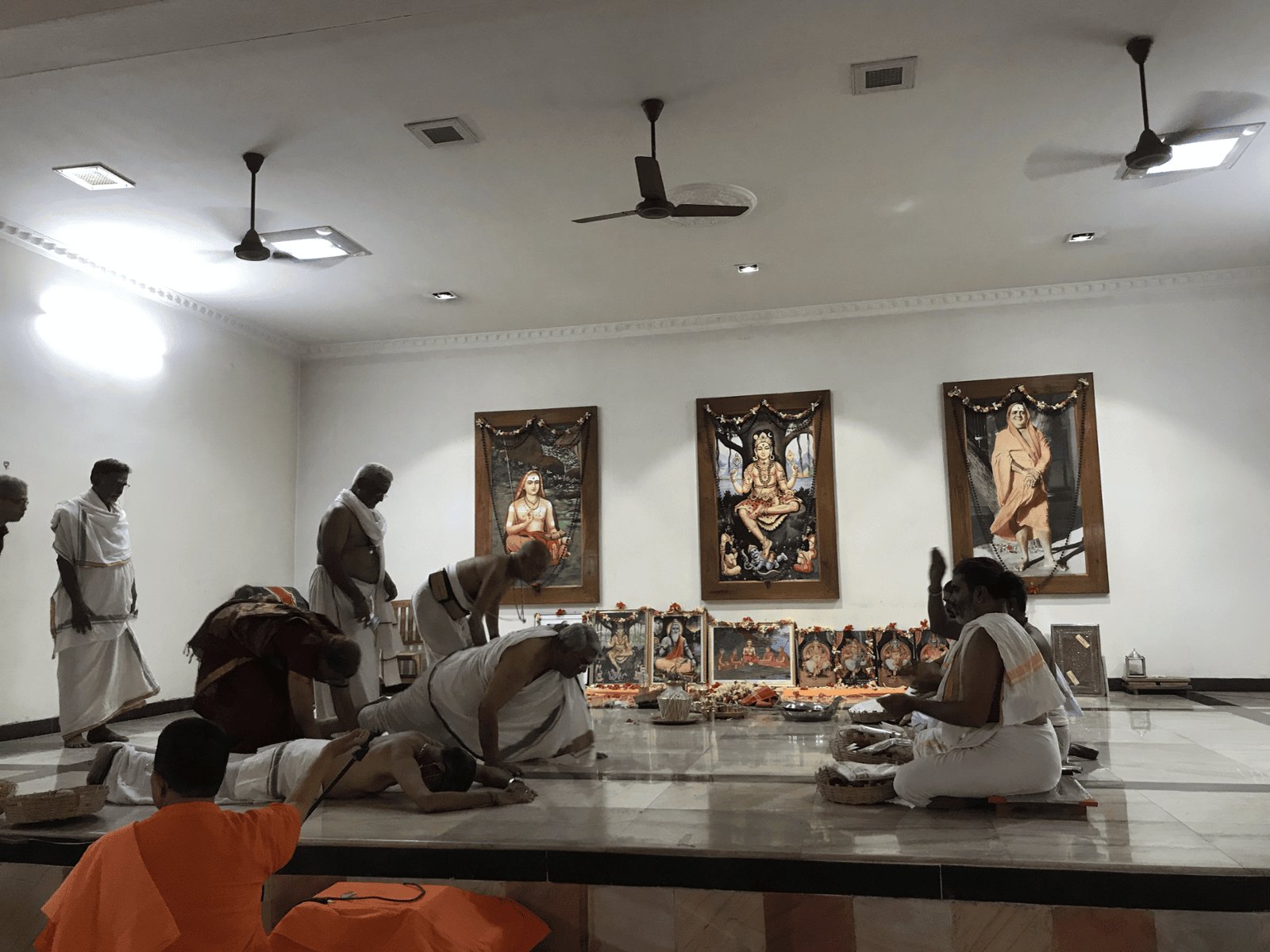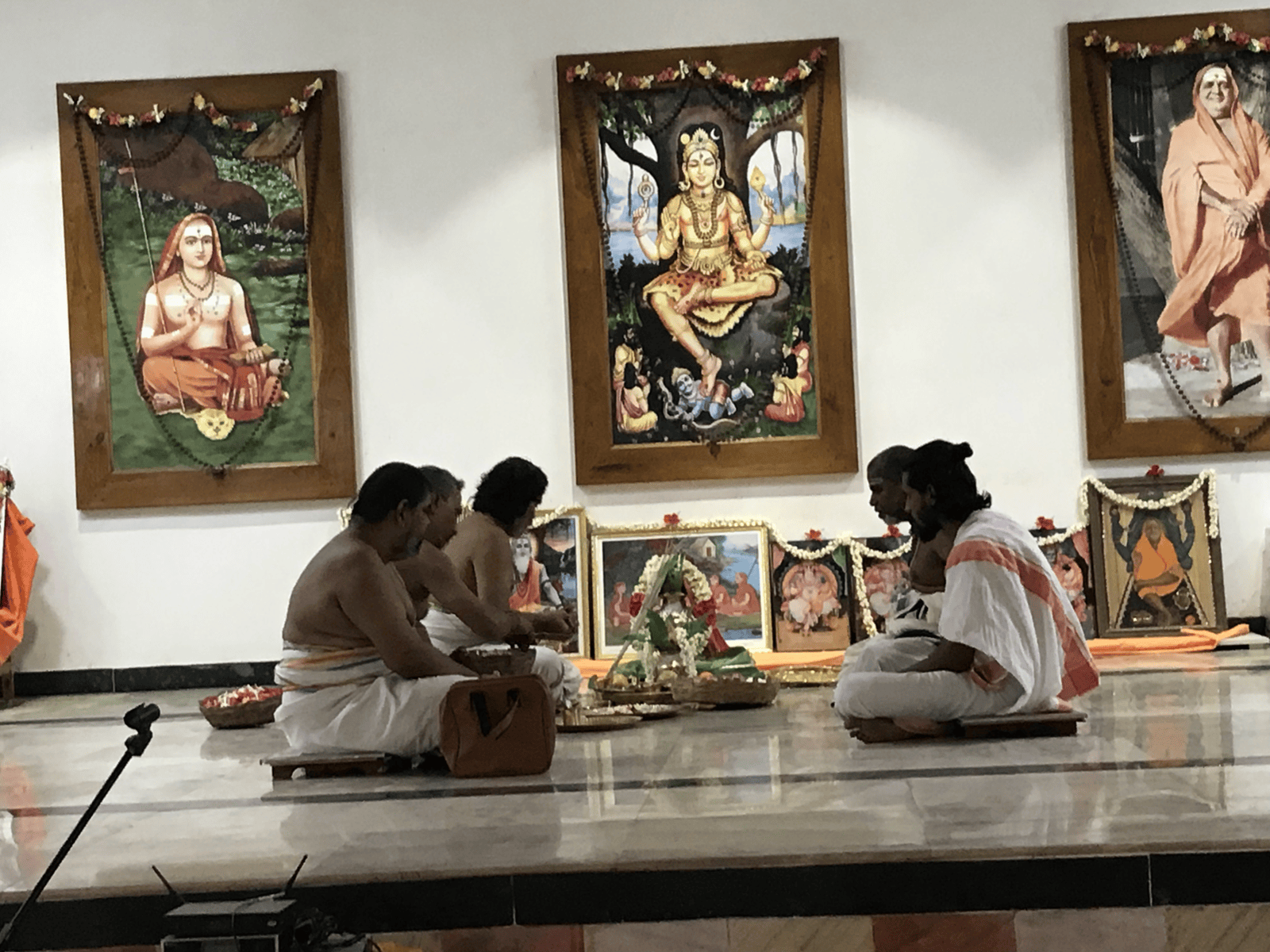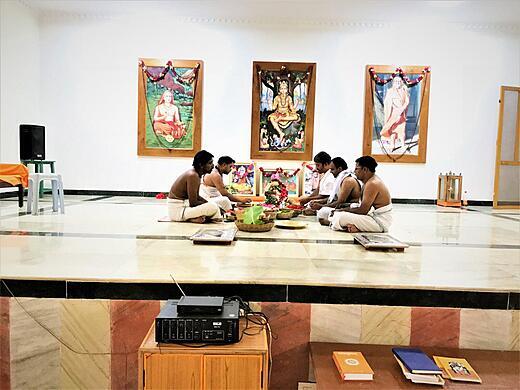Veda Parayana at Niketan
Veda is derived from the root vid (to know), which indicates a vast body of sacred and esoteric knowledge concerning the eternal spiritual values revealed to rishis in the depth of their meditation. Vedas have the highest place in the canonical literature of Hindu religious tradition.
For centuries, the Vedas have been handed down to the posterity by oral tradition and is hence called 'sruti', 'what is heard' and have been mainly utilized in performance of Yajnas and Yagas. Such utilization of Vedas in the sacrificial process led to its division upon the convenience of the priest conducting the sacrifices.
All hymns used by the hota-priest to invite the various deities to the sacrifice became Rigveda; The liturgical or the ritualistic part of Veda used by Advaryu-priest, the executor of the sacrificial rites became Yajurveda; Collection of all the musical chants, especially those associated with the Soma group of sacrifices and sung by udgatr-priest became Samaveda and the rest, a sort of miscellaneous appendix or addendum became Atharvaveda.
Sri Veda Vyasa effected this division and he taught them to his four chief disciples - Paila (Rigveda), Vaisampayana (Yajurveda), Jaimini (Samaveda) and Samantu (Atharvaveda).
The Vedas are divided in another way too: Mantra and Brahmana. Samhita is the name given to the collection of Mantras, Brahmana has two more sections-aranyaka and upanishad. Brahmanas contain liturgies in prose. Aranyakas teach about meditation based on symbolical interpretations of the liturgical rites. Upanishads are philosophical treatises dealing with ultimate purpose of life.
Conventionally, Samhita (or collection of Mantras or hymns) is called Veda and the Brahmana is referred to as Vedanta.
The Samhitas in course of time, branched off, leading to the formation of Sakhas or recensions.
Parayana of all the Vedas is now an annual event at Sri Gnanananda Niketan.
Every year, the Parayana of Krishna Yajurveda - Asitidvaya Sakha Samhita is performed during Sankara Jayanti. This is followed by Parayana of Rigveda before Swamiji's Vardhanti, Samaveda immediately following Guru Purnima, Sukla Yajur Veda on completion of Chaturmasya and Atharvaveda in the month of March.
Many people have been drawn to Veda Parayana, evincing a deep respect for the scripture and are participating in the same.
A separate Veda parayana corpus has been setup for each Veda.



